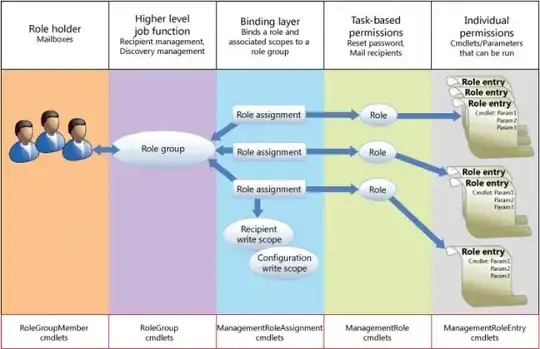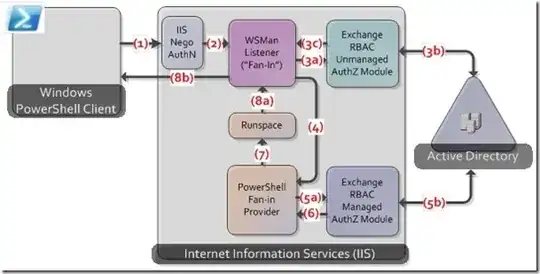Exchange 2010 has a delegation model where groups of winrm cmdlets are essentally grouped into roles, and the roles assigned to a user.
This is a great & flexible model considering how I can leverage all the benefits of PowerShell, while using the right low level technologies (WCF, SOAP etc), and requiring no additional software on the client side.
Question(s)
Is there a way for me to leverage Exchange's delegation model in my .NET application?
Has anyone attempted to imitate this model?
If I must start from scratch, how would I go about imitating this approach?
 (
( (
(